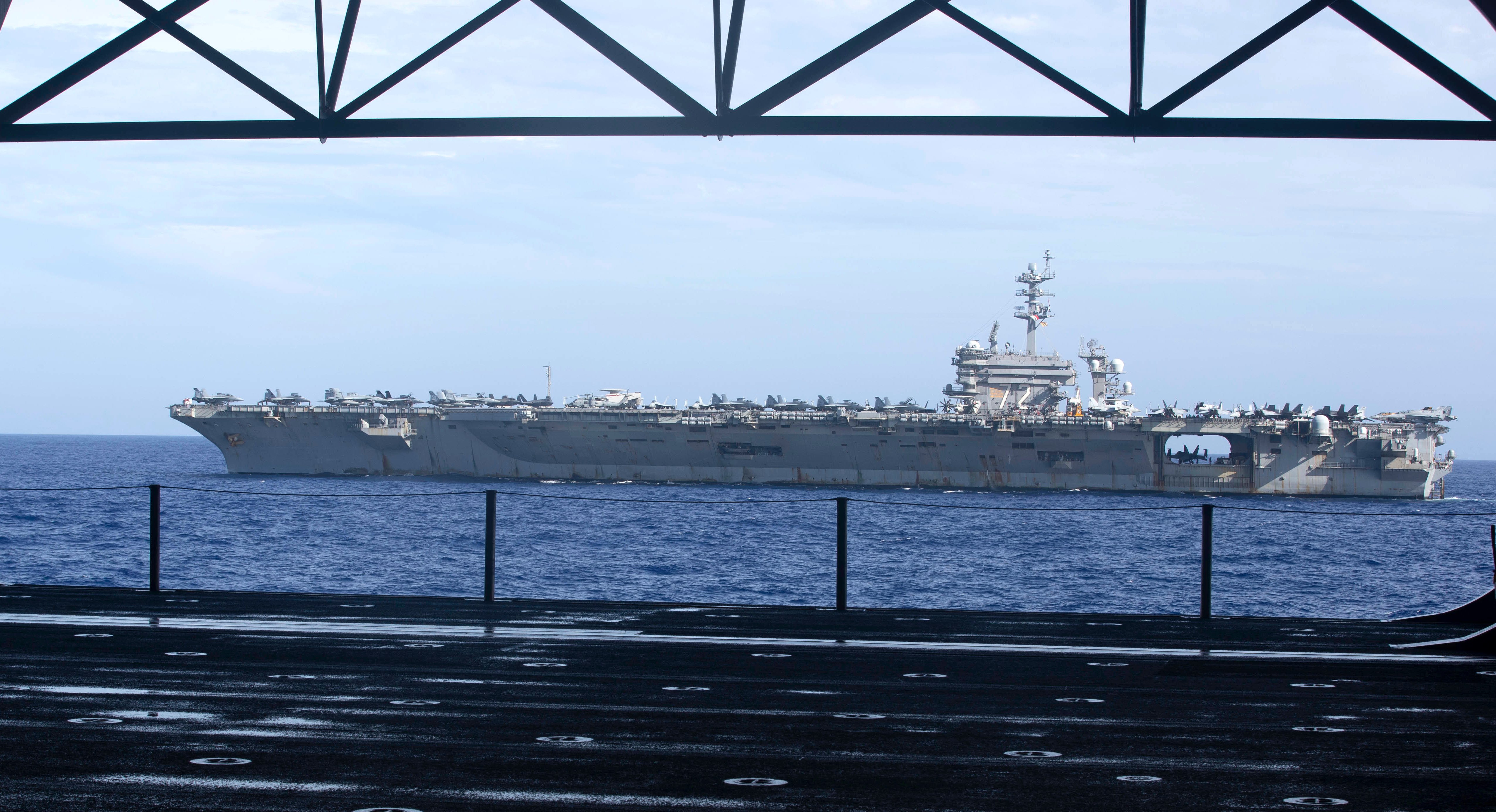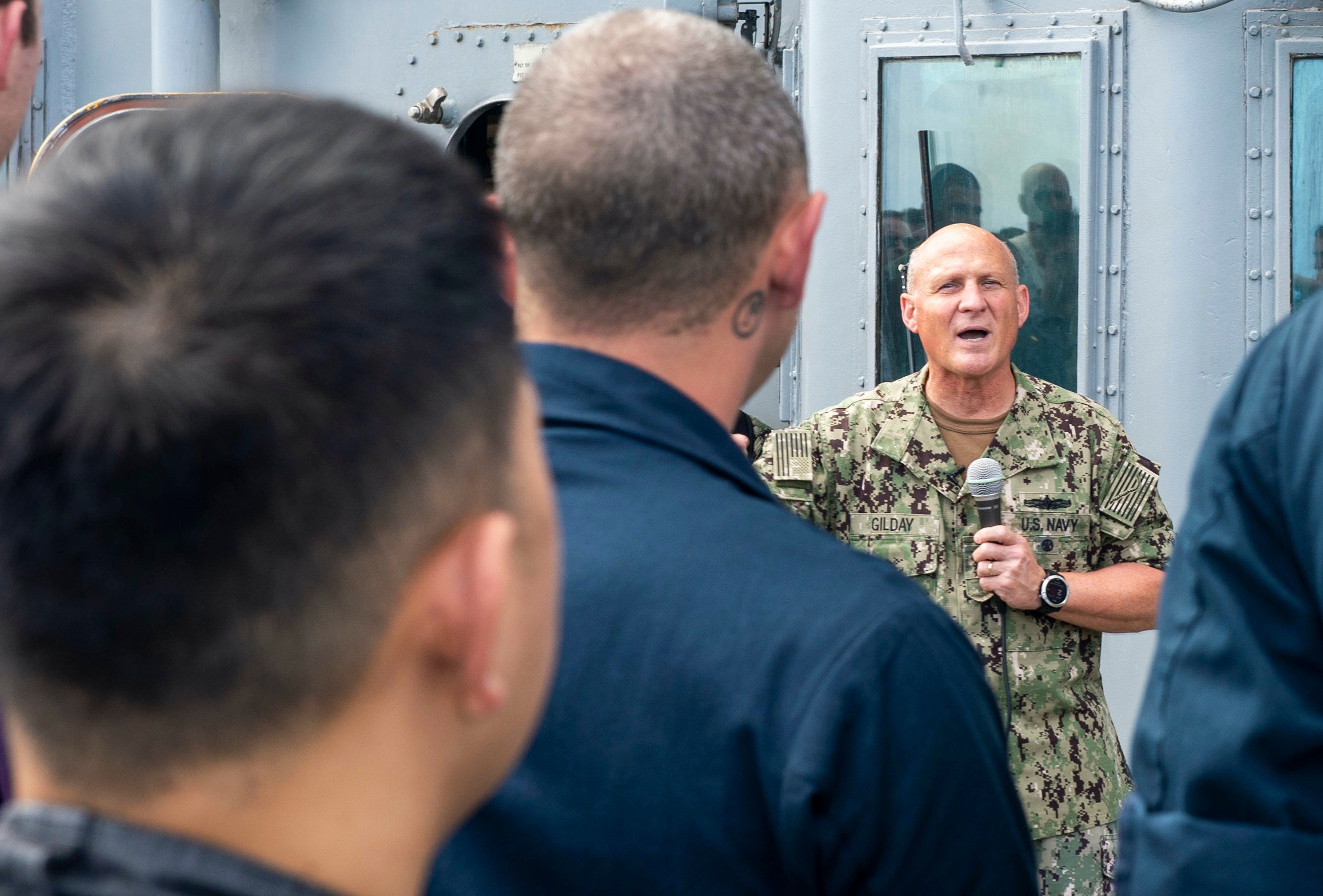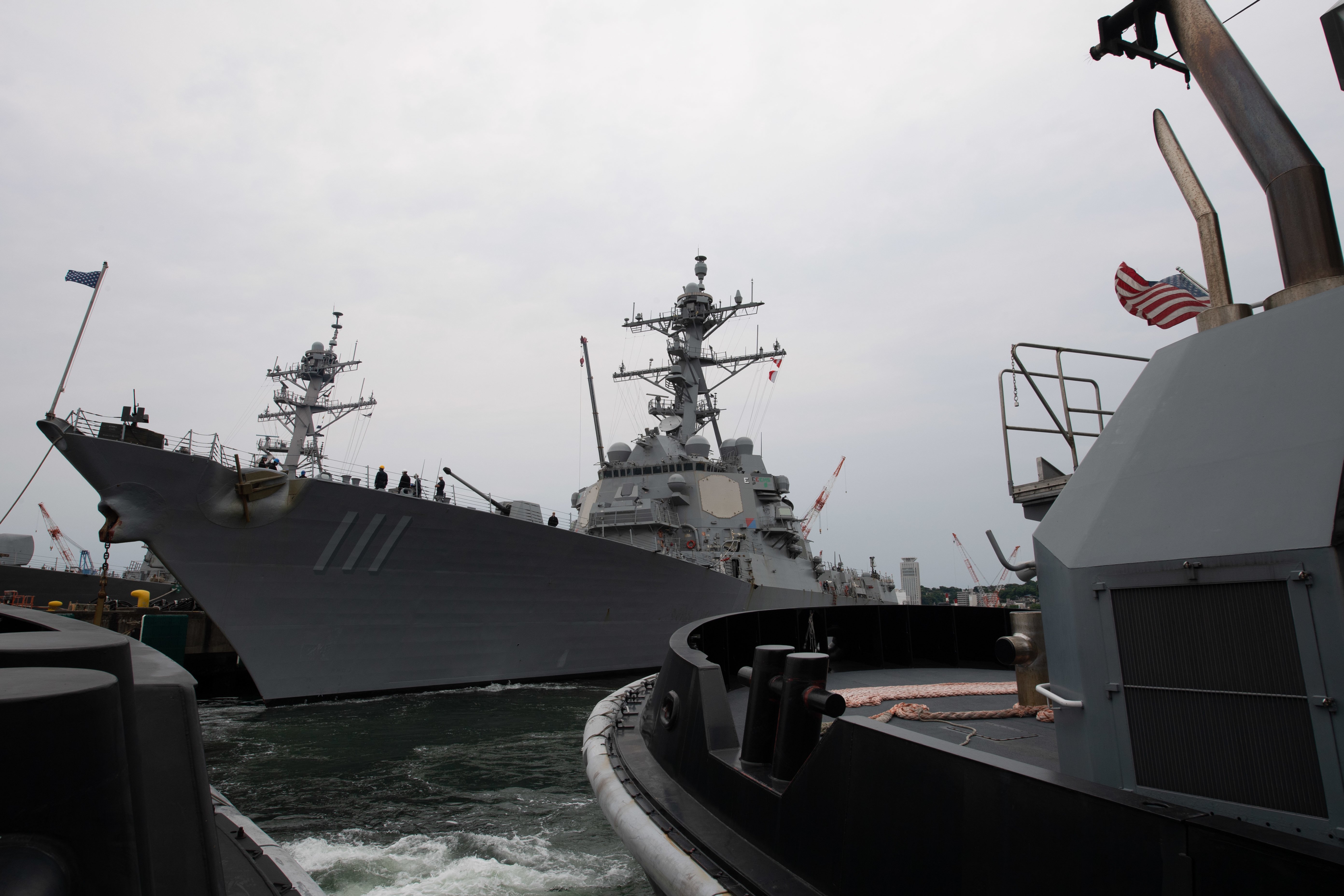
This post has been updated with comments from Chief of Naval Operations Adm. Mike Gilday
The latest plan to design a future force calls for a fleet of 373 manned ships, buttressed by about 150 unmanned surface and underwater vehicles by 2045, according to Chief of Naval Operations Adm. Mike Gilday’s update to his Navigation Plan for the Navy.
“In the 2040s and beyond, we envision this hybrid fleet to require more than 350 manned ships, about 150 large unmanned surface and subsurface platforms, and approximately 3,000 aircraft,” reads the NAVPLAN obtained by USNI News.
“Strategic competition with China is both a current and long-term challenge. Focusing our force design on 2045 will inform the most consequential decisions and investments the Navy needs to make in the critical decade ahead.”
Last week, USNI News reported the service had delivered a classified force structure assessment to Congress that factored in the combatant commander requirements and a more detailed threat assessment – particularly in the Western Pacific. The NAVPLAN factors in the latest National Defense Strategy idea of “integrated deterrence,” partnering the Defense Department with other government agencies to compete with China and keep a military advantage over Russia as well as the emerging Joint Warfare Concept linking the services together in a conflict.
Growing the fleet by only 75 ships over two decades has caused some in Congress to say the pace at which the Pentagon and the Navy are moving is too slow – a charge Gilday disputes.

“[The pace is] realistic in terms of where we are right now, let’s say in terms of capacity and capabilities and where we need to get. I think it’s going to take a couple of decades to get us to yield that hybrid fleet that we think that we ultimately need in order to fight the way we think we want to fight, which is in a distributed manner, leveraging networking like [Joint All-Domain Command and Control] and the effort that we have ongoing with [Project Overmatch], Gilday told reporters on Tuesday.
“We don’t have the capacity in the industrial base to pump out that number of ships in a short period of time. It’s going to take a couple of decades really to deliver, to mature the fleet in a manner where you get that composition that you’re looking for, over time, that gives you the kind of power that you need to fight in the distributed way.”
The NAVPLAN defines the overarching threats as the declining value of military deterrence, aggressive actions from the Chinese and Russians in contrast to international law and the speed of technological change.
Under that thought process, the 2045 fleet promotes ships with the flexibility to host higher-power weapon systems and sensors that can be quickly upgraded as technology changes.
“We will build future platforms with modernization in mind—hardware upgradeable and software updateable at the speed of innovation,” reads the report.
“We must build adequate space, weight, and power into our large long-life capital investments to support evolving sensors and weapons systems.”
The notional 2045 Navy calls for:
- 12 Columbia-class ballistic missile nuclear submarines
- 12 Aircraft carriers
- 66 Submarines split between fast attack and large diameter payload boats
- 96 Large surface combatants like the Arleigh Burke class destroyer and the emerging DDG(X) next-generation destroyer
- 56 Constellation-class guided-missile frigates
- 31 Large amphibious ships
- 18 Light amphibious warships to support to Marine Littoral Regiments
- 82 Combat logistics ships and auxiliaries
- 150 large surface and subsurface unmanned vessels that will act as sensors and as auxiliary magazines to the manned fleet

In aviation, the plan calls for a mix of 1,300 5th generation carrier aircraft with a family of Next Generation Air Dominance fighters and unmanned aerial vehicles, 900 “anti-submarine and anti-surface warfare, to include helicopters and maritime patrol and reconnaissance aircraft” and 750 support aircraft.
For unmanned, the Navy is still defining what the ships will look like. The service tested pairing large unmanned surface ships with guided-missile destroyers as part of the ongoing Rim of the Pacific 2022 exercise. That testing will continue to expand in the near future, Gilday said.
“I’d like to be in a position in the mid to late 2020s where we’re deploying a large unmanned [surface vehicle] with a carrier strike group,” Gilday.
“The future idea with large unmanned is that that be a missile carrier.”
The totals are a further tweak to the roughly 500-ship total Gilday said the service needed to meet its requirements during remarks at the WEST 2022 conference, co-hosted by AFCEA and the U.S. Naval Institute earlier this year. The round number is also largely in line with the Trump administration’s fleet plan then-Secretary of Defense Mark Esper issued late in 2020.
In line with a larger Defense Department drive, the Navy is crafting a concept of operations to conquer the vast distances in the Western Pacific with a network of sensors and shooters to find and attack targets. The Navy’s emerging Distributed Maritime Operations concept was refined last year during the Large Scale Exercise 2021. The idea for DMO is to have a fleet commander with direct operational control over several formations like a carrier strike groups and amphibious ready groups to mass their power together over thousands of miles.
“The timing was important for us. I think we’re probably the only service that’s come out with a force design that we feel is stitched with the NDS in a way that’s pretty apparent, particularly when [Secratary of Defense Lloyd Austin] talks about campaigning as the means to end, and the end being integrated deterrence,” Gilday told reporters. “With respect to campaigning, the value of the Navy is a forward presence, right, it is keeping those sea lanes open.”
To keep the pace and cost of new ships to the fleet, the report doubles down on the Fiscal Year 2023 budget goals of cutting existing ships in the fleet, including aging Ticonderoga -class cruisers and relatively young Littoral Combat Ships. Removing both classes of ships from the fleet have been contentious in Congress, with legislators form both parties seeking to block the early retirements.
“The Navy must set a sustainable trajectory now to ensure we remain the combat-credible maritime force our nation needs in the future,” reads the report.
“Retiring legacy platforms that cannot stay relevant in contested seas—and investing in the capabilities we need for the future—is essential for our national security.”





